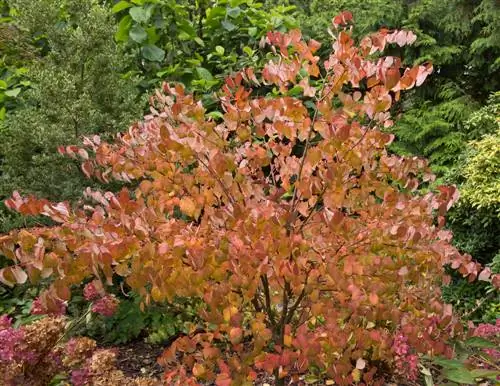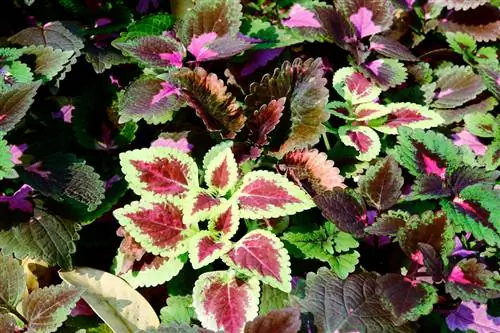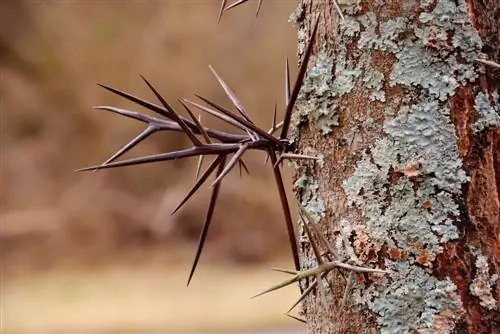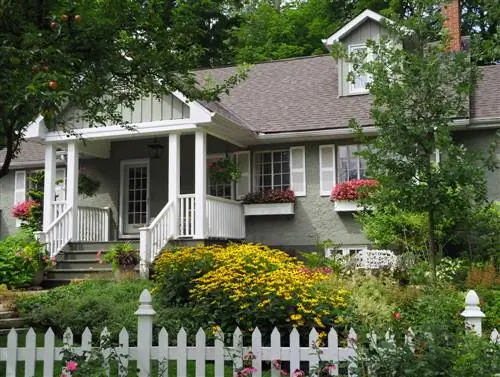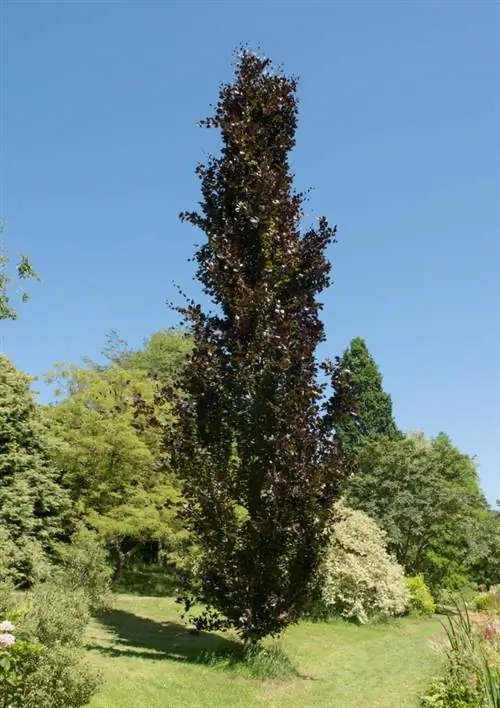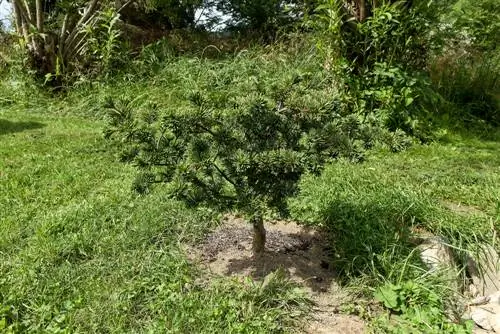- Author admin [email protected].
- Public 2023-12-16 16:46.
- Last modified 2025-01-23 11:21.
Many beautiful deciduous and coniferous trees can be found in almost every garden. If you want to set accents in your area and attract astonished looks from your neighbors, choose unusual species. The ones presented here also thrive in our climate and are an ornament for the front garden.
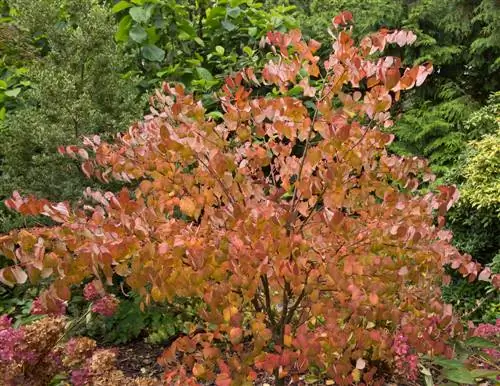
Which unusual trees can I plant in my garden?
Unusual trees for the garden include the Chinese bluebell tree, gingko or fan leaf tree, katsura tree, handkerchief tree and tulip tree. These offer striking flowers, interesting leaf shapes and colors as well as unusual growth forms.
Unusual garden trees
Sometimes it's the eye-catching flowers, sometimes the shape and color of the leaves or the growth habit: a tree can do much more than just provide shade, it can also become a fascinating eye-catcher. If the usual garden center offerings aren't enough for you, take a look at our suggestions.
Chinese bluebell tree (Paulownia tomentosa)
With its lush foliage, this summer-green tree, up to 15 meters high, appears almost tropical. With its thick, sparsely branched branches, it creates a picturesque, broadly spreading crown. What is particularly striking, however, are the purple, funnel-shaped flowers, which grow in large panicles at the ends of the previous year's branches and open in April shortly before the leaves unfurl.
Gingko or fan leaf tree (Ginkgo biloba)
This deciduous deciduous tree, native to China and Japan, grows up to 30 meters tall when old. There are numerous varieties that differ in habit and foliage. The dwarf gingko 'Marieken' is particularly recommended for small gardens and pots.
Katsura tree (Cercidiphyllum japonicum)
The deciduous, early-sprouting Katsura tree is also called the cake or gingerbread tree. It usually grows with multiple trunks to form a tree up to 15 meters high with a conical crown. The species has bluish-green, strangely palmate leaves on the top, which turn a beautiful light yellow to scarlet red in autumn. The falling leaves give off a cake-like scent. This beautiful tree grows slowly and therefore finds enough space even in medium-sized gardens.
Handkerchief tree (Davidia involucrata)
The deciduous handkerchief tree is also called the dove tree. It slowly grows into a tree about 15 meters high. The broad, heart-shaped leaves are fresh green on top and have dense, silky hairs underneath. The flowers of this tree are quite unusual: they are actually inconspicuous, but are flanked by white, hanging bracts that are up to 16 centimeters long. Fully blooming trees offer a spectacular sight when they bloom in May/June.
Tulip tree (Liriodendron tulipifera)
The tulip tree is closely related to the magnolias, but is much larger, reaching a height of between 25 and 40 meters. The bluish-green leaves turn a beautiful golden yellow in autumn. The real attraction, however, are the tulip-like flowers with the yellow petals.
Tip
Among the conifers, the bald cypress, which grows up to 40 meters high, is considered an exceptional exotic species. The tree is very suitable for planting along lake or pond edges.

